今天來給大家講解一類NEC中比較常出現且有一定難度的題型。我把這類題稱為(wei) 模型計算類。因為(wei) 這類型的題目既需要我們(men) 理解相關(guan) 概念的經濟模型,也需要我們(men) 會(hui) 一些數學運算。
我會(hui) 通過下麵這道問題來展現下這道問題的解法
Suppose that a market is described by the following supply and demand equations:
Qs=3p-120
Od=400-2p
Suppose that the government imposes a tax of $60 per unit, and the buyers are liable for the tax. How muchwill buyers and producers burden per unit?
ABuyers: 60 Producers: 0
BBuyers: 16 Producers: 44
CBuyers36 Producers 24
DBuyers 24 Producers 36
EBuyers 44 Producers 16
題目給了我們(men) Supply function 和 Demand Function。並要求我們(men) 計算,當政府施加60$的per unit tax 後,Buyer 和 Producer 分別承擔多少的稅。這道題考驗了我們(men) 對於(yu) 間接稅這個(ge) 模型的理解能力,我們(men) 知道after indirect tax, cost of production of the firm increase and this will shift supply curve leftward. 通過模型,我們(men) 可以發現,加稅前Consumer pay 和 Producer receive 在一個(ge) 點。加稅後Consumer pay 的價(jia) 格更高了,而Producer 收到的錢更少了。具體(ti) 可以參考下圖。
知道了圖長什麽(me) 樣後,我們(men) 就可以開始計算了。首先把加稅前的Supply function和Demand function帶入。Qs=3p-120 Qd=400-2p. 5P=520 P=104。
由於(yu) 間接稅隻會(hui) 影響supplyfunction,所以加稅後demandfunction 不變,而根據公式,我們(men) 知道加稅後的supplyfunction變成了Qs=C+d(P-t)=-120+3(p-60)
加完稅後的新equilibrium: Qs=Qd, -120+3(p-60)=400-2p
經過計算,P=140,這個(ge) P是price pay by consumer after indirect tax的價(jia) 格,而Price receive by producer需要拿140-60的per unit tax=80 。這樣consumer pay 的價(jia) 格和producer 收到的價(jia) 格都有了,我們(men) 就可以在圖上標上方便我們(men) 分析。可以參考下圖。
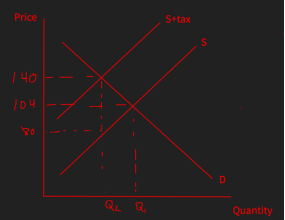
那麽(me) 最後,我們(men) 發現加完稅後consumerpay的價(jia) 格比原來的價(jia) 格140-104,高了36. Producer收到的價(jia) 格比原來104-80低了24.
因此消費者承擔的稅是36$per unit 生產(chan) 者承擔的稅是24$per unit.正好和選項C相符合。因此本題答案為(wei) C。
那有的同學可能會(hui) 說了,我不畫圖直接算行不行。當然是可以了,但這對於(yu) 你的能力要求,你需要腦子裏對間接稅的模型有一個(ge) 清晰的認知。我的建議是同學們(men) 遇到這種題目的時候不要懶,動筆畫一下,並不會(hui) 花費你太多時間。有一個(ge) 清晰的圖在你旁邊能更大大加強你對題目的理解度。
下麵我們(men) 再看一道考驗我們(men) 對模型理解能力的題:
Congress places a $3,000 tax on sports utility vehicles (SUVs). It is to be collected from the sellers of SUVs. As a result of the tax, sellers’ increase the price of SUVs on their lots by $2,000. What can be inferred?
a)Nothing can be inferred without more data on quantities supplied and purchased.
b)Sellers are taking advantage of the buyers.
c)Demand is perfectly inelastic.
d)Demand is neither perfectly inelastic or perfectly elastic.
e)Demand is perfectly elastic.
這道題需要我們(men) 對demand and supply diagram 還有PED的概念有一個(ge) 認知。
如果說PED是perfectly inelastic 的話,那麽(me) 3000$的間接稅會(hui) 讓產(chan) 品的價(jia) 格上升3000$, 具體(ti) 情況如下。
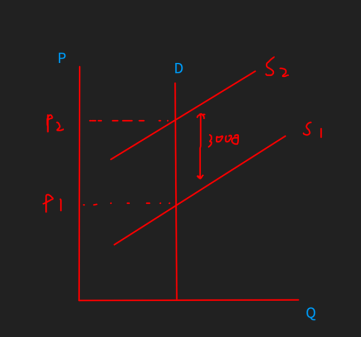
這是因為(wei) Producer知道自己產(chan) 品的PED是perfect inelastic 的情況下將會(hui) 把政府3000$的稅全部轉嫁到消費者身上,因為(wei) 他們(men) 知道自己的產(chan) 品貴了也有不會(hui) 影響銷量。
而如果PED是perfectly elastic的話,3000$的間接稅則不會(hui) 對產(chan) 品的價(jia) 格產(chan) 生任何影響。具體(ti) 情況如下圖。
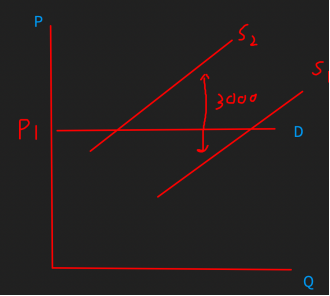
這是因為(wei) 如果Producer 知道自己的產(chan) 品PED是Perfectly elastic 的情況下,他們(men) 不敢漲價(jia) ,因為(wei) 一漲價(jia) 就沒人買(mai) 他們(men) 的產(chan) 品了,他們(men) 隻能自己承擔3000$的間接稅,因此對於(yu) 產(chan) 品價(jia) 格沒有影響。因此本題選擇答案D,Demand is neither perfectly inelastic or perfectly elastic.


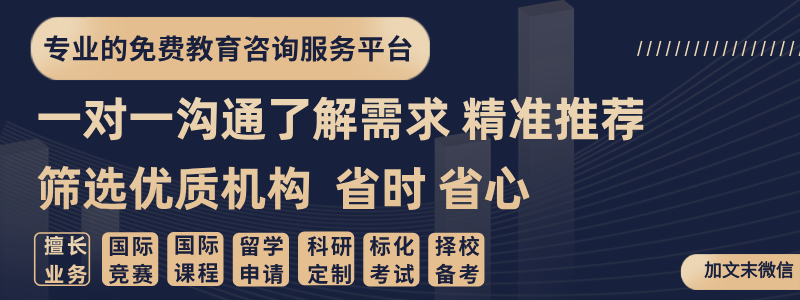


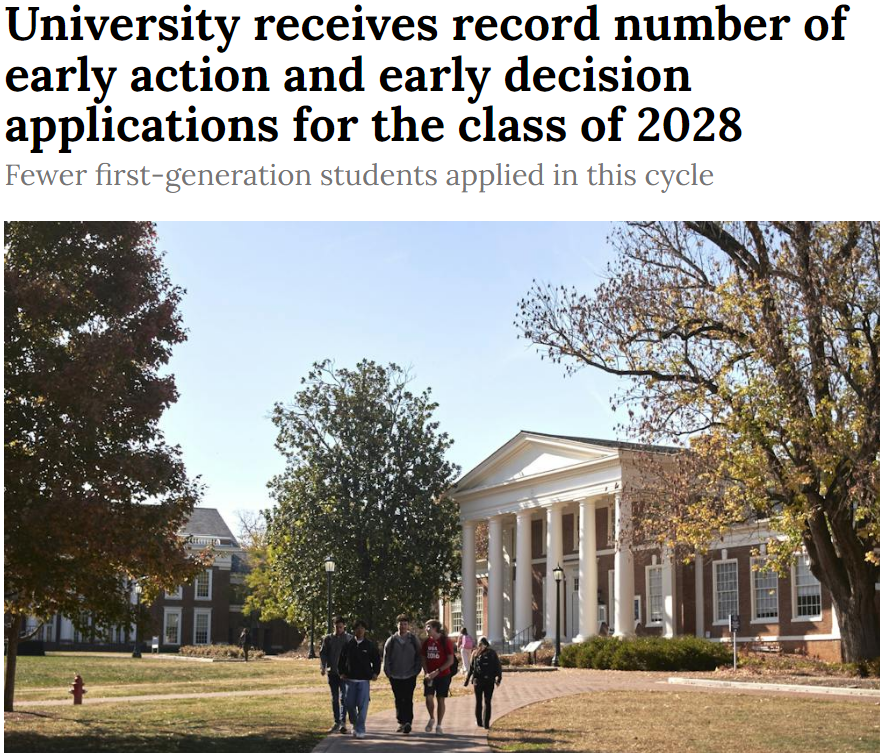






評論已經被關(guan) 閉。